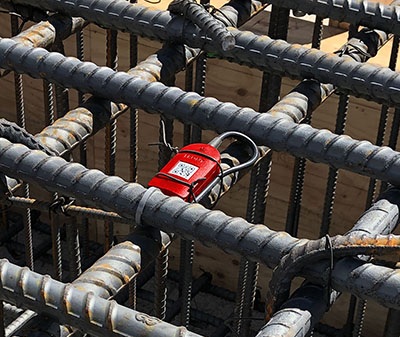These days, it’s common to hear people talk about the impact of big data and the Internet of Things on just about every industry. While construction and infrastructure aren’t the first applications most people think of for today’s most advanced sensors, monitors, and data analysis systems, access to accurate data can be incredibly helpful in these industries. The use of concrete sensors for more effective calculations is one excellent example.
The Invention of Concrete Meters
Concrete sensors have been around in less advanced forms for some time. The first of them was based on the moisture meters more typically used by flooring contractors to measure wood and other materials and were designed to be used as relative tests. Contractors used the early concrete moisture meters to spot-check the surface of concrete slabs, which could help them determine the best place to use more accurate testing methods.
Current Applications for Concrete Sensors
Today, a concrete sensor can provide far more information than a simple moisture meter ever could. Concrete sensors now detect temperatures to avoid cracks and relative curing time for quality assurance. They are even sometimes used with automatic control systems for heating and cooling concrete.
The most advanced of today’s concrete sensors operate like Fitbits for concrete mixes, producing vital readouts of each mix’s inner workings to make it easier for contractors to estimate maturity levels. They are incorporated into the concrete mix while it is poured, at which point these fixed sensors start transmitting data continuously, often using wireless Bluetooth technology.
Benefits of Using Concrete Sensors
Some contractors have been hesitant to adopt new technologies, believing that it’s not worth spending the money. After all, the way they have always done things was good enough for the past, so it should continue to be suitable for future applications. What they are failing to recognize is that the many benefits of using concrete sensors make them well worth both the investment and the time required to learn how to use them. Those benefits include the following.
Time Savings
The certainty provided by measuring concrete maturity with sensors instead of relying on incremental test cubes and other traditional approaches allows contractors to implement shorter cycle times. The use of automatic notifications offers further time savings by allowing contractors to focus their attention elsewhere until the concrete reaches its target value.
Increased Safety
Safety is of the utmost importance in all concrete applications, but it’s especially vital when contractors are completing large-scale infrastructure. Having access to reliable data from within these structures makes it easier to ensure compliance with quality and strength thresholds and even allows for the safe repositioning of formwork in cold weather conditions.
Reduced Costs
Contractors that can plan cycle times more effectively can also ensure the optimal use of both materials and personnel, helping to reduce costs. That’s not the only way that concrete sensors help to cut back on costs. They also eliminate the need for traditional testing tubes, optimize the concrete procurement process, and help to reduce the need for extensive finishing.
Quality Is Key Contractors know that cutting corners is never a good idea when it comes to material quality, and the same goes for sensors. Be sure to purchase a well-designed system from a reputable vendor. It’s the best way to make the most of new technology and keep up with changing times



